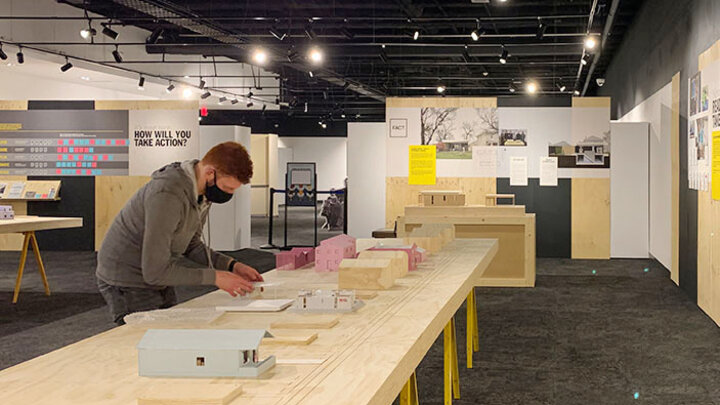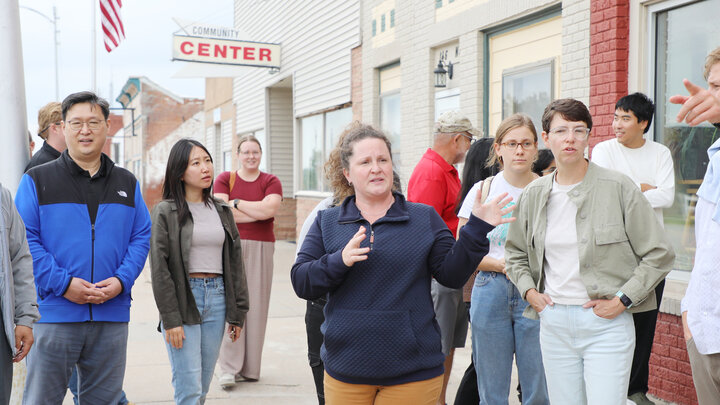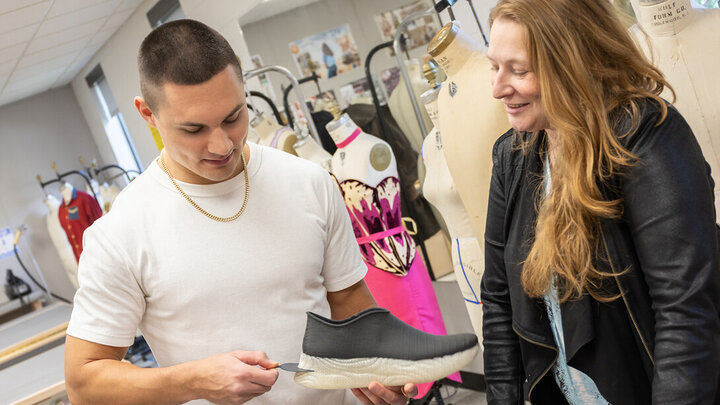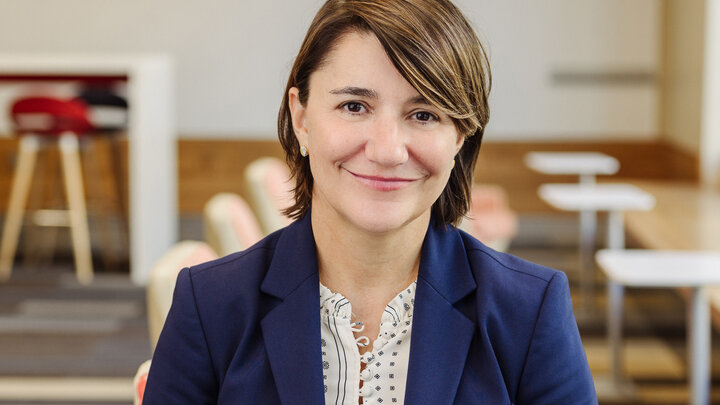The United States is facing a housing crisis, and it’s affecting potential home buyers and renters across the income spectrum. One needs to look no further than their own backyard to see the effects of this. From urban to rural, Nebraskan’s have endured an ongoing housing shortage that has hit low-income Americans particularly hard. In fact, according to the National Low Income Housing Coalition, only 37 units of affordable housing are available for every 100 extremely low-income American renters. The government defines affordable housing as dwellings that costs less than 30 percent of a family's income, however according to Habitat for Humanity, 17 million households spend more than 50 percent of their income on housing. This begs the question, what can designers, planners, teachers and stakeholders do to combat this?
Last semester, several College of Architecture studios from across disciplines explored creative housing solutions to assist with the crisis including a collaboration between the Architecture Program’s FACT designbuild studio and the Community and Regional Planning Program’s (CRP) Planning Studio. Work from that studio collaboration will be on display from April 15 until the end of the year at the Nebraska History Museum along with a past FACT project focusing on affordable housing. The exhibition titled “NEw Attainable House” is part of a series of programs hosted by the museum addressing the eviction and housing crisis in Nebraska.
The idea for the “NEw Attainable House” project and exhibition emerged from a discussion FACT studio instructor, Professor Jeffrey L. Day, FAIA, had with the Nebraska History Museum, one of the studio’s non-profit partners. “They invited us to do something in conjunction with the traveling “Evicted” exhibition that opened in December, 2020,” said Day.
He explains, their designbuild studios usually create the concepts and when possible, build portions of the projects. However, with the pandemic, building was out of the question for the moment.
Instead, Day suggested the studio prepare design solutions locally that explore various approaches to attainable housing in Nebraska. As planning for the studio progressed, their non-profit partner list kept growing and by the beginning of the semester, six project partners were in place and the scope of the project grew. Two partners were from Omaha: inCOMMON Community Development and Omaha Economic Development Corporation (OEDC); three from Lincoln: NeighborWorks, Habitat for Humanity and South of Downtown Community Development Organization; and one from Norfolk: Northern Ponca Housing Authority.
“The studios were split into six teams, each matched with their own non-profit partner consisting of two FACT members and a CRP student. We charged the teams with creating prototypical housing designs appropriate to our non-profit partners and the communities they serve,” said Day.
These design concepts incorporated research from CRP students mentored by planning studio instructor Frank Ordia.
“The research conducted by the CRP students, helped shape and inform the design of the “NEw Attainable House” projects,” said Ordia. “They collected data such as zoning, regulatory restrictions, demographics, income ranges, market values and future income values.” In addition to research, the CRP students also conducted some data analysis to assist with the project’s planning for housing equity and attainability.
“We examined the racial make-up of Omaha/Lincoln neighborhoods over time and conducted an affordability assessment to see if housing values and rents exceeded incomes in those areas,” said Ordia. “After all, one of the main goals of the project is to make home ownership more attainable.” Another analysis project involved property value projections for some of the proposed concepts.
“For example, if one of the proposed homes was going to have a basement apartment that could be used as an Airbnb, what would that income look like?” said Ordia. “And if they sold the property later, what might that look like. All that information is important to our students, stakeholders and developers.” Shortly after the design and planning process started, reoccurring design solution themes started to emerge. The two design projects in Omaha incorporated flexibility at various levels. The goal of the “Adaptable House” for OEDC was designed with a diverse range of potential owners in mind with spaces that could add function for a variety of different purposes. Similarly, the “Hybrid House” created for inCOMMON Community Development provided a unique ownership model with flexibility for future transformation, a design that would grow with its occupants and expand and change as needed.
Alternative living/housing solutions were also explored by the student teams with an emphasis on affordability, increased living density and shared living spaces. The “Neighbor-Type” project for NeighborWorks-Lincoln explored a high-density model where students created a housing solution that involved having five houses on a two-lot property using a community land trust model. For the South of Downtown Community Development Organization, students designed a new housing type “Common House” that’s a cross between a shared house and an apartment. Other shared space designs included “The Courtyard Common House” created for Northern Ponca Housing Authority for a lot in Lincoln. Designed to serve elder residents of the Ponca tribe of Nebraska and other eligible Native Americans, the concept includes a complex of six homes centered on social communal areas for a compact, efficient and socially activated living environment.
Efficiency and affordability were the driving factors for Habitat for Humanity’s “Core House.” The plan focuses on centrally locating the utilities, plumbing, HVAC and consolidating them into one wall which significantly reduces the cost of the home. Studio projects like “NEw Attainable House,” give students invaluable real-life experiences dealing with clients and design solutions for community stakeholders.
“I was amazed to see the leadership skills of my students flourish,” said Ordia. “It was heartwarming as an instructor to see them embrace the project and take so many initiatives. This project was a great exercise for my students to see what it was like to be a planner, handle a budget and communicate across disciplines.”
“Working with a partner like InCommon, an organization that strengthens neighborhoods, has been extremely beneficial for both my education and professional experience by considering the role design can play in improving vulnerable neighborhoods,” said Weston Hanisch, a student in the Master of Architecture Program.
All of these projects have a real possibility of being built but each have their own timeline. Of all the concepts, the OEDC and the Northern Ponca Housing Authority projects are the most likely to begin construction in the near future. While many only see the studios’ value if the built works are accomplished, the inherent value is much greater to students as well as the broader community.
“All of these projects serve the community in one way or another. Even if they don't get built,” said Day. “The fact that these ideas are being shared with people in the state of Nebraska and the city of Lincoln through the museum, means they are having a community impact. This sort of flips the idea that getting built was the primary goal of the studio. It's a good side benefit, but the goal is to produce really good work and disseminate what we’ve learned through the museum and publications.”
Day explains, through sharing new housing concepts and prototype designs, that’s when real change happens.
Project Team
Instructors: Jeffrey L. Day, FAIA & Frank Ordia Design students: Pedro Aguero Arroyo, Weston Hanisch, Dana Howerter, Rebecca Kalhorn, Sawyer Kuhl, Quinn McFadden, Nathanial Meier, Noah Schacher, Jamie Schacher, Emily Tetschner, Josh Weinand, Madeline Whitted
Planning students: Anna Headlee, Vadelynn Ndembet, Megan Patent-Nygren, Roland Schwichtenberg, Mohamed Gibriel




